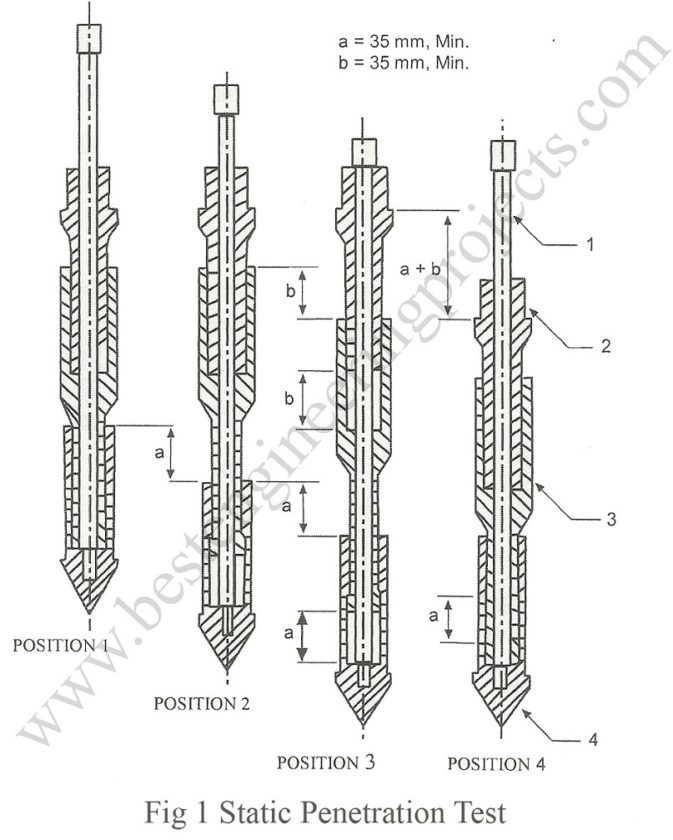What is Static Cone Penetration Test or Cone Penetration Test?
The static cone penetration test is also known as cone penetration test (CPT) since the cone is used to penetrate through the ground surface. The penetro-meter used in this process consists of a 600 cone with a base area of 10 cm2 and a friction jacket to avoid skin friction. Along with the diagrams in fig.1, the sequence of operation of the penetro-meter is briefly described below:-
You can also check another for Dynamic Cone Penetration Test
Operation procedure of Static Cone Penetration Test
- In position l, the cone and friction jacket assembly is in collapse position. This is the initial position of the penetro-meter.
- In position 2, the cone is shown to have been pushed down by inner sounding rods to such a depth till a collar engages the cone while the friction jacket attains the same position. The reading shown by the gauge in this position is the cone resistance.
- In position 3, both the cone and friction jacket are pushed together. This operation provides the sum of cone and frictional resistance together. Additional resistance is provided by the jacket.
- In position 4, the outside mantle tube is pushed down and this operation brings the cone assembly in position 1. The total frictional resistance of the jacket is obtained by subtracting the value obtained in position 2 from the value recorded in position 3. One should note the fact that this method is suitable in the strata of fine grained soil only. The process mentioned above is repeated continuously till the desired depth is reached. The cone is pushed at a standard rate of 20 mm per second.
